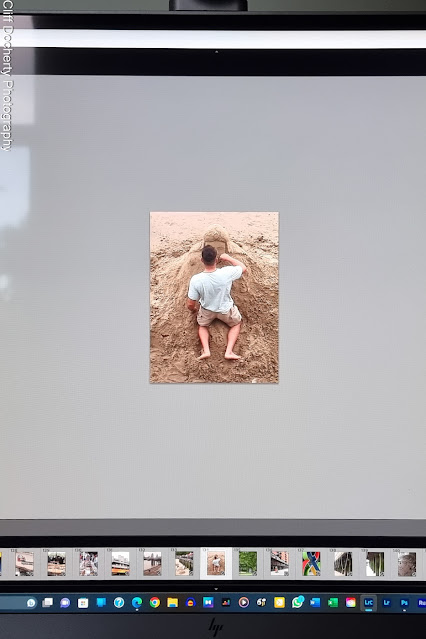I glanced furtively around me on the typically busy footbridge which runs between London's Embankment station on the north bank of the Thames, and the tourist swamped South Bank which was busier than usual thanks to the Udder Belly festival taking place right at the steps of the bridge. I was fishing about inside my rucksack for the heavy weight which had been pulling my shoulder blades steadily towards Australia for the last hour since I'd left home. The weight in question was a vintage digital camera (yes, they're a thing) dating back to the mid-90's and was one of the first digital cameras that was truly digital, and not just something that captured analogue video in a still frame.
And my god it was a beast. In fact I thought I was carrying an entire donkey inside my bag. But no, it was merely a brick. Pretty devoid of any aesthetic design ethos other than 'tidy' the brick still packed the equivalent of a 40 to 400mm zoom lens in 35mm terms, together with an efficient autofocus system and an array of 'special effects' finishes that could be applied to your pictures.
So I hefted this thing out, conscious of the tourists busy snapping the festival and the street performers with their sleek looking modern phones and cutting edge cameras and sure enough, I got looks, bewilderment and bafflement being chief among them.
"Bro" said a bro. "Cool camera."
"Thanks." I said, ashamed.
"What kind of memory card does it take?" He asked.
"Fllllppmmmm" I said, under my breath and looking away.
"Didn't get that...?"
"Floppy disc" I repeated, waiting for the inevitable.
Silence. Then:
"Bro, how does that even work?" He said, at length.
"Well you have to walk around with a box of floppies and feed them in every so often" I said, sheepishly.
He laughed, and patted my back and walked off. I stood there feeling like the smallest guy in the changing room.
Its not as bad as it sounds though. In fact you can fit about 40 pics onto a floppy. Pretty much the same as a 35mm film, so you can see the marketing potential. The trouble is the resolution is very small, and the image is tiny on modern screens.
So how does this handle in practice. Well, slow. Slooooowwwww. You take a picture and the floppy chugs and clunks and whirs and you swear there's a gnome inside the camera with a chisel sculpting the image onto the disc. It takes an age. Oh, and it doesn't save. It 'records' the image. No rapid shooting here, You wait and you're thankful when it stops.
And the picture quality? Pretty dire. I'm struggling to think who might have used them. Maybe someone who needed instant pictures. People at parties, journalists with no access to fast film processing, maybe estate agents but I can't see how it would show off a property to its best advantage (though it would hide a multitude of shortcomings, so yes, maybe estate agents). Artists could do something creative with the images though, maybe stitching stuff together or making some sort of statement. Then there's always the early adopters. For me, I got it for next to nothing as an eBay win a few years back to add to my vintage camera collection and have a fun summer playing with creatively. It cost me more to source the floppies and the A drive to add to my computer (and don't get me started on getting modern computers to accept an A drive), but it was achieved so there, I'm nothing if not stubborn.
So what do these pictures actually look like? A bit shit actually 😆
People browsing the book market on London's South Bank (Digital Mavica DF7)


.jpg)
.jpg)
.jpg)
.jpg)
Comments
Post a Comment